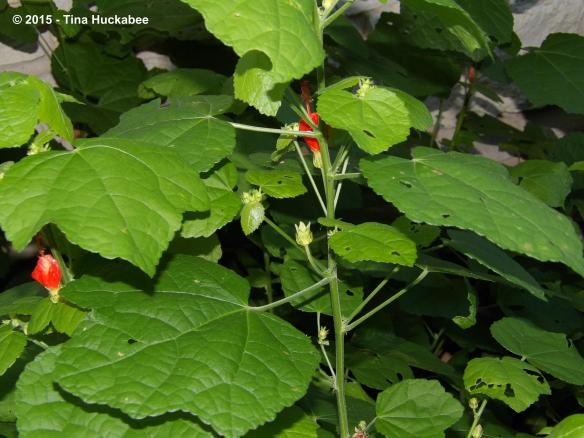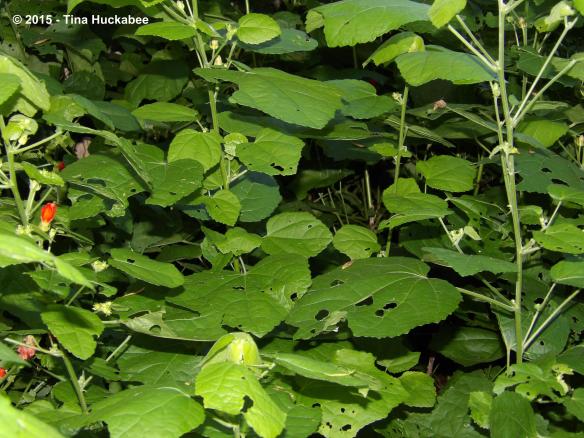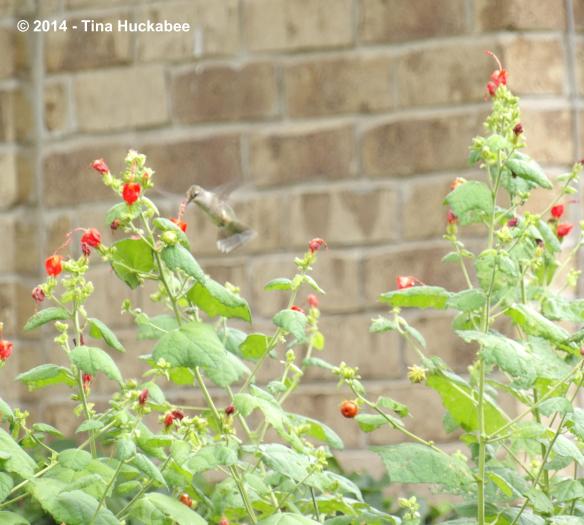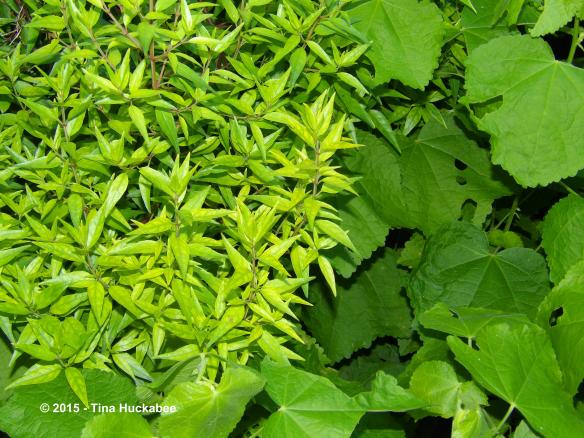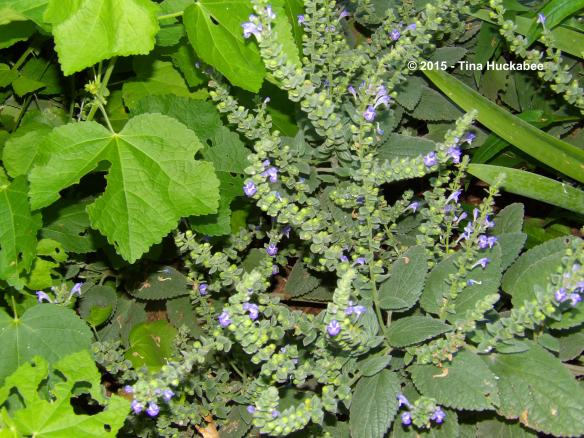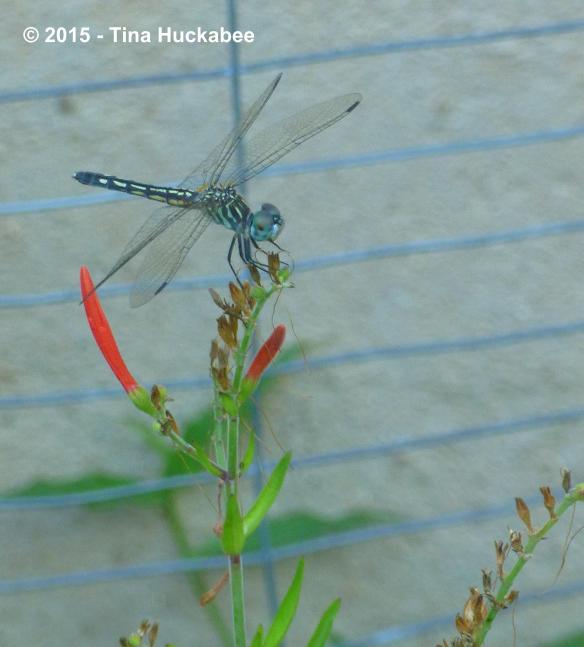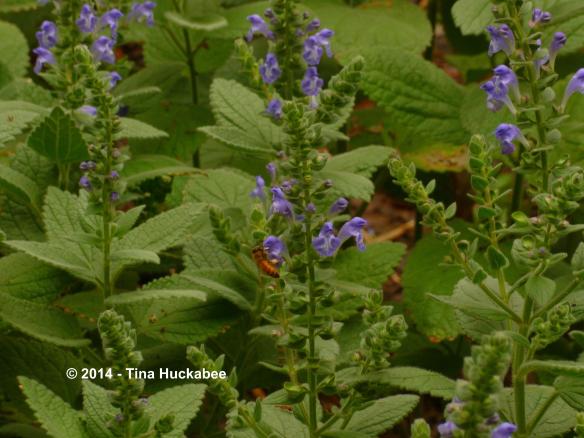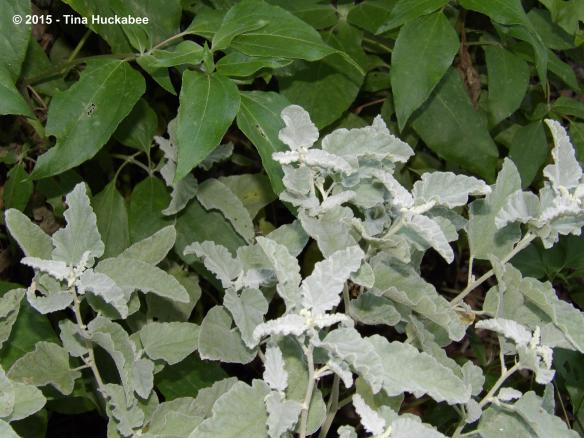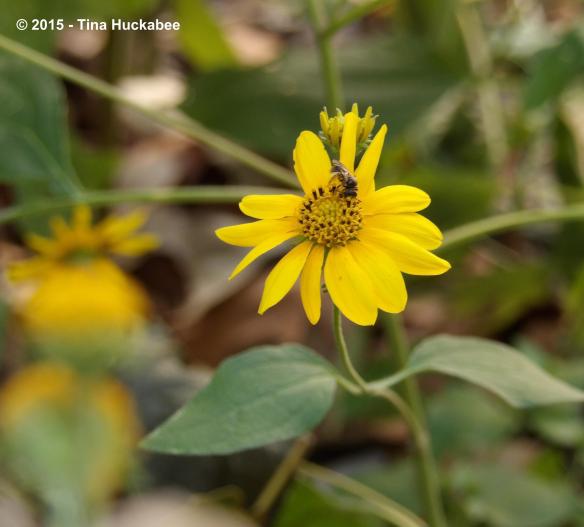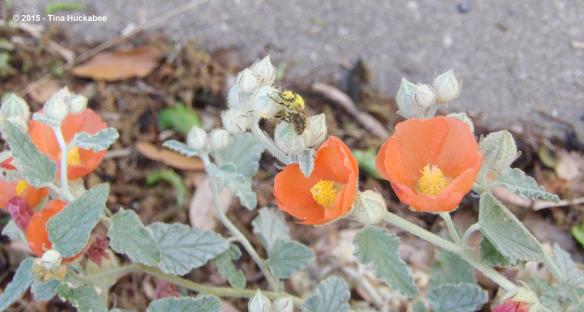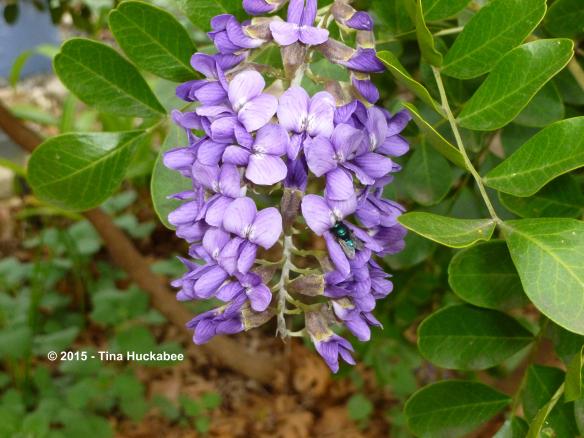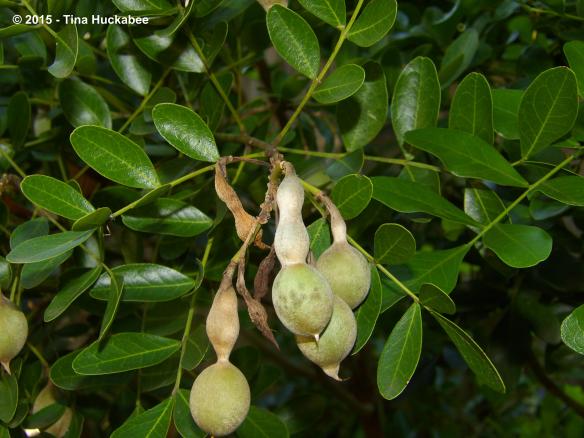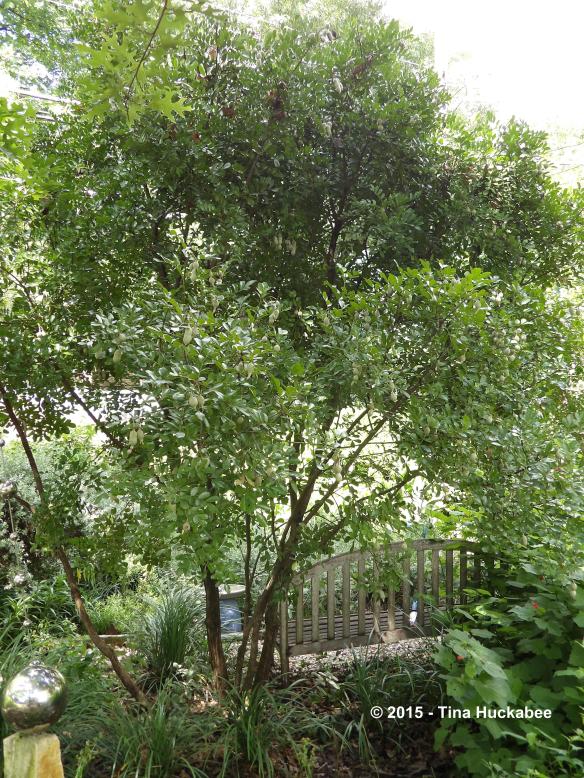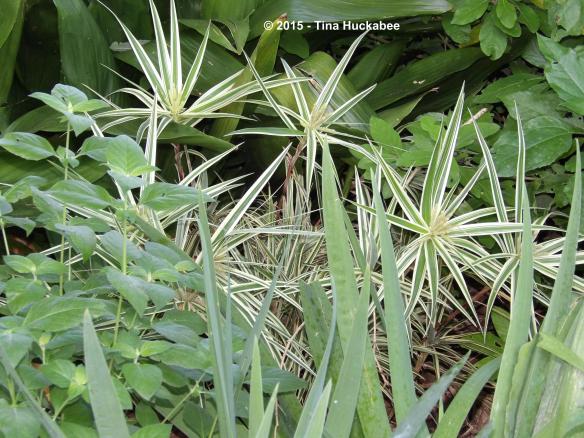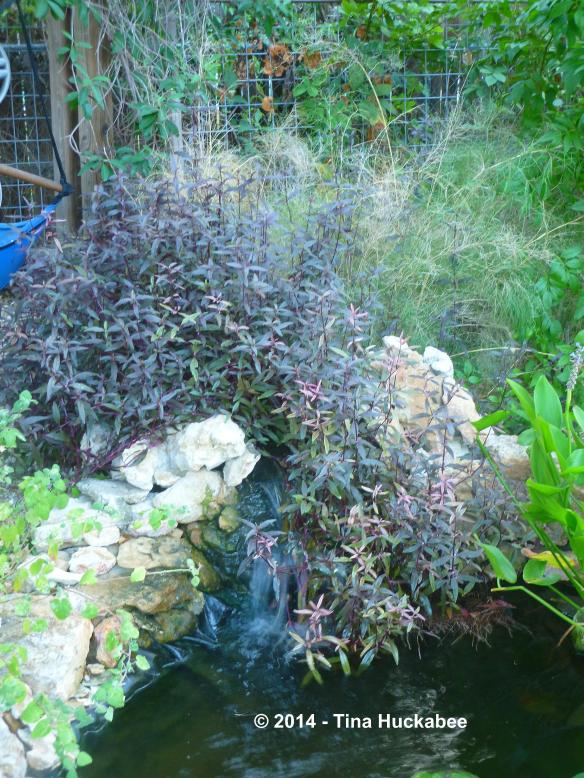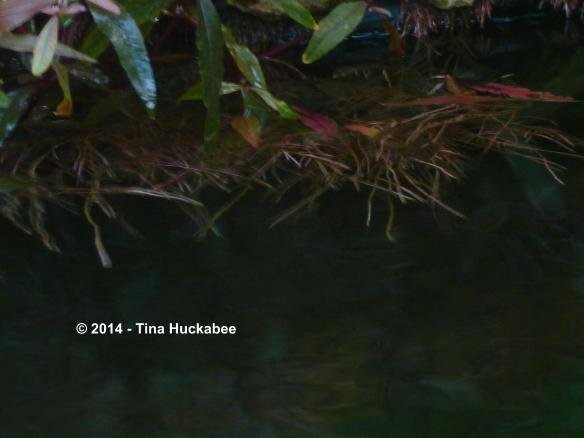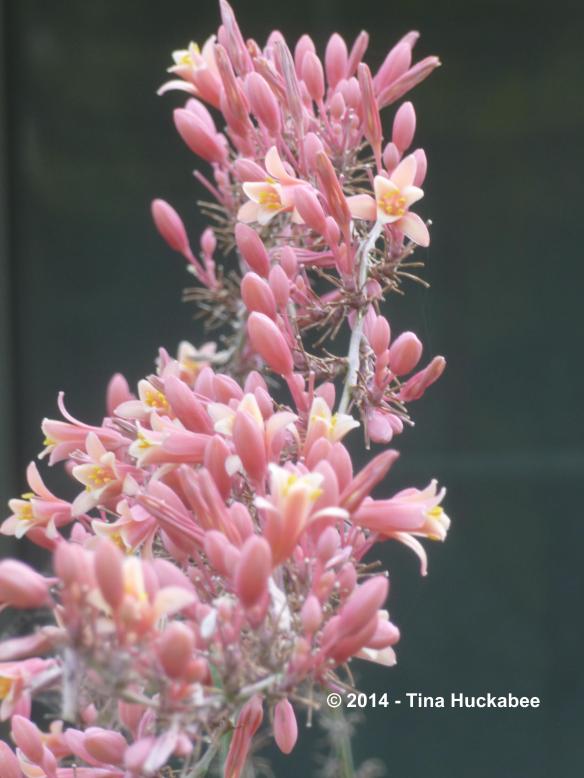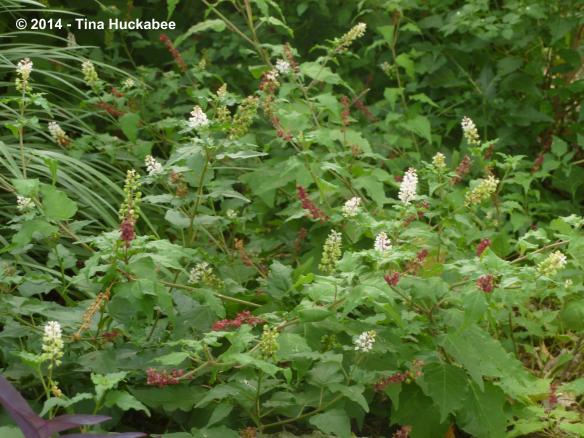It’s been awhile since I’ve participated in showing off foliage after bragging about blooms, but today I’m glad to join in with Pam at Digging for Foliage Follow-Up. Additionally, June 15-21 is Pollinator Week and along with fab foliage, we’ll take a look at a few of the many pollinators that happily and diligently work for free in the garden.
Many of my native Texas perennials shoot forth in foliage growth during wet years and this year is no exception to that general rule. The leaves of Turk’s Cap, Malvaviscus arboreus, are wide and lush and a bit holey, due to munching insects abundant this spring and summer.
I don’t really mind the chunks taken out because those eating machines do little damage to the plant as a whole. The Turk’s Cap flowers are good for pollinators like this hummingbird who happily nectared last fall in preparation for migration.
Turk’s Cap foliage complements other interesting foliage, like the slender, bright leaves of Flame Acanthus, Anisacanthus quadrifidus var. wrightii,
…and the gray, aromatic leaves of Heartleaf Skullcap, Scutellaria ovata.
Both Flame Acanthus and Heartleaf Skullcap are excellent pollinator plants.
Oops! That damselfly visiting the Flame Acanthus is a beneficial insect in the garden, but not a pollinator.
On the other hand, Ms. Honeybee, nectaring on the Skullcap, is certainly a pollinator worth cheering on.
The sandpaper-rough, dark foliage of the perennial Goldeneye, Viguiera dentata, pairs nicely with the soft, ruffly foliage of Globe Mallow, Sphaeralcea ambigua.
Goldeneye flowers,
…and Globemallow flowers,
…attract all kinds of pollinators and both are favored by native bees.
Mountain Laurel, Sophora secundiflora, is a beautiful tree year-round. Waxy, softly rounded, evergreen foliage perfectly augments the lusciously drooping clusters of spring flowers, which are visited by many kinds of pollinators.
After the blooms have ended, the foliage is attractive–really attractive.
Mountain Laurel blooms are stunning, but the abundant and verdant foliage, as well as the graceful form of this tree is its selling point for me.
Mountain Laurel is a winner–in the urban garden or viewing on a hike in the Texas Hill Country.
Finally, this ‘Sparkler’, Carex phyllocephala, has no value to pollinators that I’m aware of.
But I’ve welcomed it and two more to my gardens. It’s cheery–downright sparkly–evergreen and white, as well as drought tolerant. What more could you ask from a foliage-driven plant?
What are your leafy greens (or maybe purples? reds?) doing this June? Show them off and then pop over to Digging for a look at foliage shared by other gardeners.

